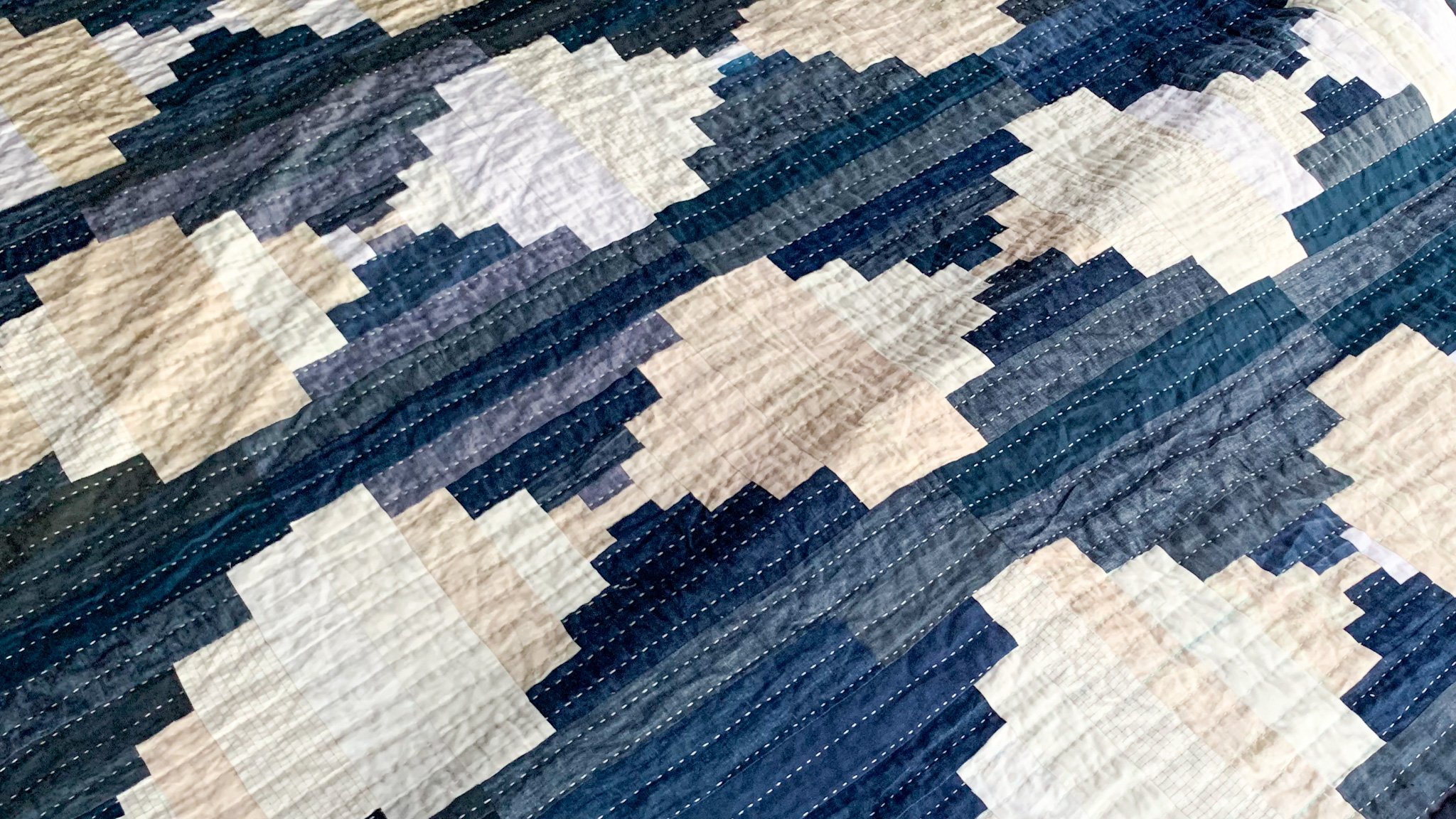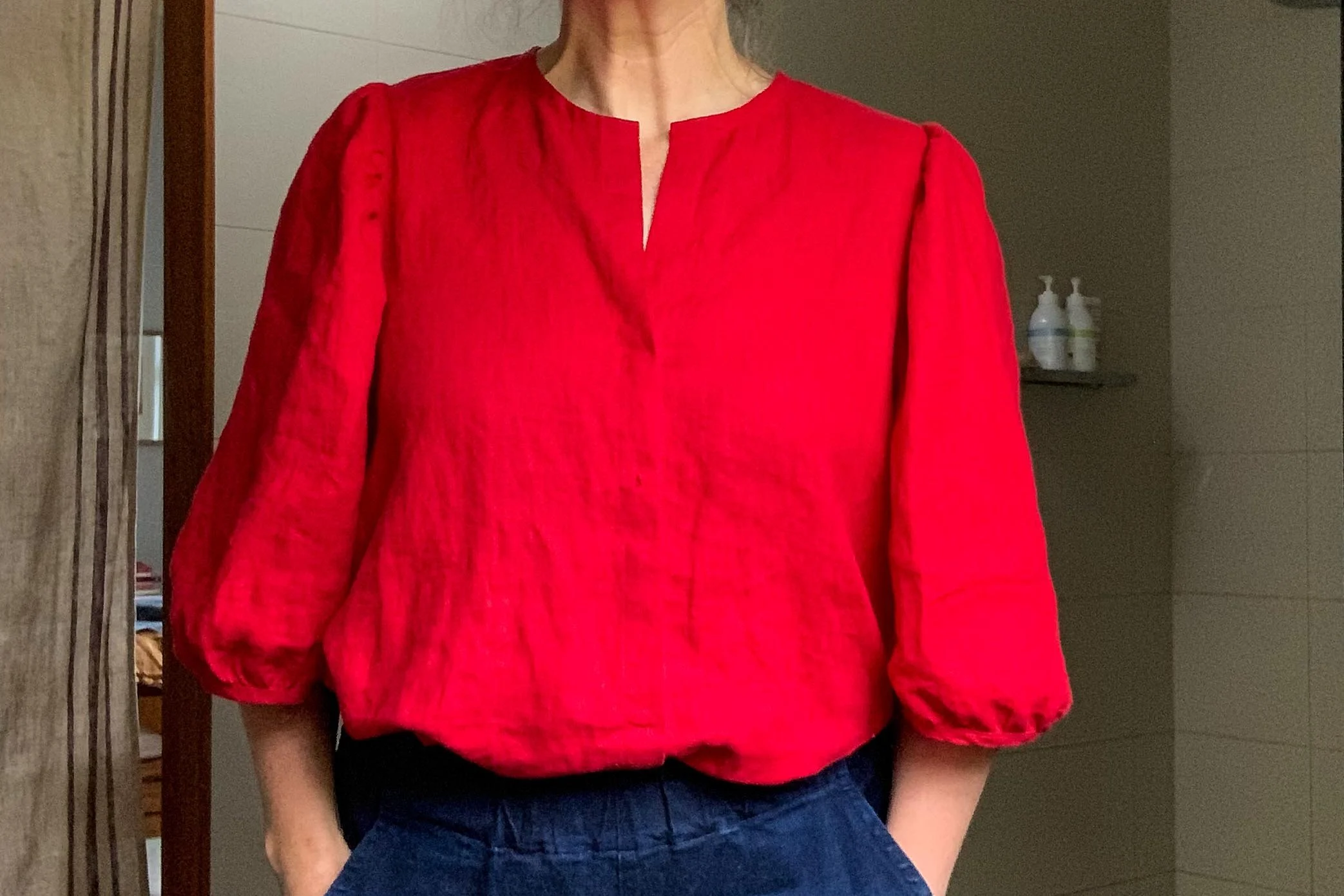I Made This is a weekly blog series that features makers from around the world and aims to talk about the things we are proud of; of the objects we make that have meaning to us and the journey we take to make them.
Today's I Made This is by Christine Chitnis, a writer and photographer from Providence in the US. I was lucky enough to befriend this ace woman at Squam last year through my gorgeous friend Kellen. Sitting in our cabin in the evening, and watching the care and patience with which Christine knits, was truly inspiring. I often find myself trying to race through my knitting to get something finished - but she seemed to be content to quietly and carefully knit*. I learnt something in that moment.
I suppose I am a long-time crafter. My love of making dates back to my youth when I first learned to sew from my mom. I would piece together wonky doll quilts and over-sized fleece pajama pants. I hated measuring and cutting straight lines, but loved zipping along on the sewing machines. I have the same habits today, and my imperfect quilts still make my mom laugh. To me, they're perfectly imperfect, just the way I like it. I decided in middle school that I wanted to learn to knit, and since my mother didn't know how, she signed me up for lessons at the knitting shop in our small town. I spent hours there after school, knitting with and learning from a circle of older women. Looking back, I can't help but wonder how they viewed the awkward pre-teen in their midst.
Once I reached high school, I was fully entrenched in sports, music and academics, and for the time being, my love of crafting took a backseat. Busy high school years led into college, where I juggled nanny work with a full time student schedule and various clubs and activities. After college I started working straight away, six days a week in the non-profit sector, as well as evenings waitressing. I was busy.
Until I wasn't.
At 24, I married and moved away from my friends, my beloved city of Chicago and my work to be with my husband at his new job. As a newlywed in a brand new town, I didn't have a clue as to what to do with myself. I have never been good at down time, but I felt it would be a mistake to rush into the next job, not knowing what I really wanted to do with my life. Around that time, seven years ago, blogs were becoming a "thing" and I thought I would start one, and use it to improve my writing, if nothing else. Little did I know it would completely change my life, give me a new career as an author and photographer, and reintroduce me to my love of crafting and making.
Inspired by all the projects I saw out there in the blog world, I returned to my needles and relearned the art of knitting, sharing all my beginner project on my blog and feeding off the positive reinforcement. I bought a used sewing machine and began quilting again, working my way up to garment making as my skills improved. I had my first baby, then 20 months later, my second. Knitting and sewing, photographing and writing became a life line, a way to infuse the daily drudgery with windows of creativity and joy. I love my kids dearly, but life as a young mom can suck you dry.
My youngest is now 2, and my oldest started preschool this year. Our lives are hitting a nice pace, and I continue carving out time for my craft, finding ways to fit it in between the endless loads of laundry and dinner preparations, the book deadlines and bedtime routines. Now that I have relearned the necessary skills, I am shifting my focus to creating garments that I actually want to wear. Garments that fit my life and style.
That meant taking a hard look at my style, and what I like, and this is what I found: I am a tomboy at heart, most comfortable in a worn pair of jeans and t-shirt, or simple sweater. I love a pop of color, and a fun detail, but ease is key. I'm becoming better at gauge and fit, though I still have much to learn and I'm the laziest gauge-er you've ever met. My favorite sweater thus far is my Antler. It is perfection, it really is. Well except for that small hole where I might have dropped a stitch, and the way it's a bit short under the arms. Perfectly imperfect, just the way I like it, and just the way it'll always be.
* As evidenced in her lovely quilted vest.









































